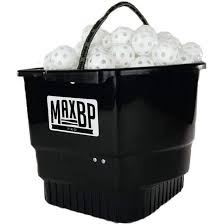When most people think of multi-sport athletes, they think of the traditional combinations of baseball and football - Bo Jackson, Deion Sanders and more recently Kyler Murray. Perhaps even baseball and basketball, like Danny Ainge.
Baseball Hall of Famer Dave Winfield was drafted in three sports - baseball, basketball and football - out of the University of Minnesota. However, a multi-sport athlete that always fascinated me was Hall of Fame pitcher Tom Glavine - who was drafted by the Atlanta Braves (2nd round) and the Los Angeles Kings (4th round) back in 1984.
By all accounts Glavine was the real deal on the ice, recording 47 goals and 47 assists in 23 high school games as a senior, while being named MVP of Merrimack Valley League. NHL general managers were so convinced that Glavine was a legitimate prospect that he was actually drafted ahead of future NHL Hall of Famers Luc Robitaille and Brett Hull in the '84 NHL Draft.
So this was a fluke right? A multi-sport athlete with an affection for baseball and hockey. Wrong. When analyzing the number of NHL players with ties to the Little League World Series, it seems that hockey and baseball go together like stink on ... skunks.
Here are several recognizable hockey players to make their mark in Williamsport:
Stephane Matteau - The former NHL journeyman played for Quebec in the 1982 LLWS. He was a wing in the NHL for over a decade. He is best remembered for his stellar play in the New York Rangers' run to the Stanley Cup in 1994.
Pierre Turgeon - Turgeon played with Matteau in the 1982 LLWS for Quebec. He later went on to become the top pick in the 1987 draft by the Buffalo Sabres. Throughout his career Turgeon scored over 500 goals and played in four All-Star Games.
Ray Ferraro - The Trail, Canada native played for British Columbia in the 1976 LLWS. He played in the NHL for 18 seasons, and racked up over 400 goals in his career. Ferraro led the Islanders (13 goals, 20 assists) to a promising run in the 1993 NHL Playoffs; however, the Islanders couldn't get past Montreal, who went on to win the Stanley Cup.
Chris Drury - The former captain of the New York Rangers' first claim to fame was as the MVP of the Connecticut team that won the 1989 LLWS. While at Boston College, Drury won the Hobey Baker Award for best college player in the nation. During his NHL career, Drury won the Stanley Cup with the Colorado Avalanche. He also won a silver medal representing the U.S. team in the 2010 Olympics.
It's hard to argue that the aforementioned athletes made a poor choice dedicating their time to the blue line rather than the white lines. They all had long lasting careers on the ice; however, it is interesting to consider why they may have come to that decision. One possible answer is that hitting a baseball is widely considered the most difficult thing to do in sports.
That is not to say that hockey doesn't come with extreme challenges. The athletes are on ice skates after all, and without a doubt hockey players are required to have more toughness and endurance than baseball players. But, it's easy to speculate that Turgeon, Drury, Ferraro and Matteau might have decided to focus on hockey during their teenage years - as the pitching in baseball, with higher speeds and varied breaking balls, became more difficult to hit.
Perhaps if these athletes had the opportunity to practice with MaxBP, their careers would have taken them down a  different path, and they'd have more teeth to show for it. As the pitchers in their respective leagues improved their velocity and off-speed repertoire, these players could have imitated the at-bat experience with the MaxBP Pro Machine.
different path, and they'd have more teeth to show for it. As the pitchers in their respective leagues improved their velocity and off-speed repertoire, these players could have imitated the at-bat experience with the MaxBP Pro Machine.
Now there is also a really good chance that all four of these athletes had a passion for hockey that surpassed that of baseball. If that was the case, they also could have used MaxBP for a number of hockey drills (and no I'm not talking about Happy Gilmore wearing a couple off the chest). Hockey players can utilize MaxBP to improve their puck handling (stopping a MaxBP wiffle ball at high speeds), shooting ability (taking a slap shot off a pass from the MaxBP coming at an intermediate speed) and goal tending (catching/stopping a ball at a variety of speeds and trajectories).
So whether you are a baseball enthusiast, a hockey aficionado or the "Tom Glavine type" who enjoys both sports, MaxBP is the right recipe for success.

